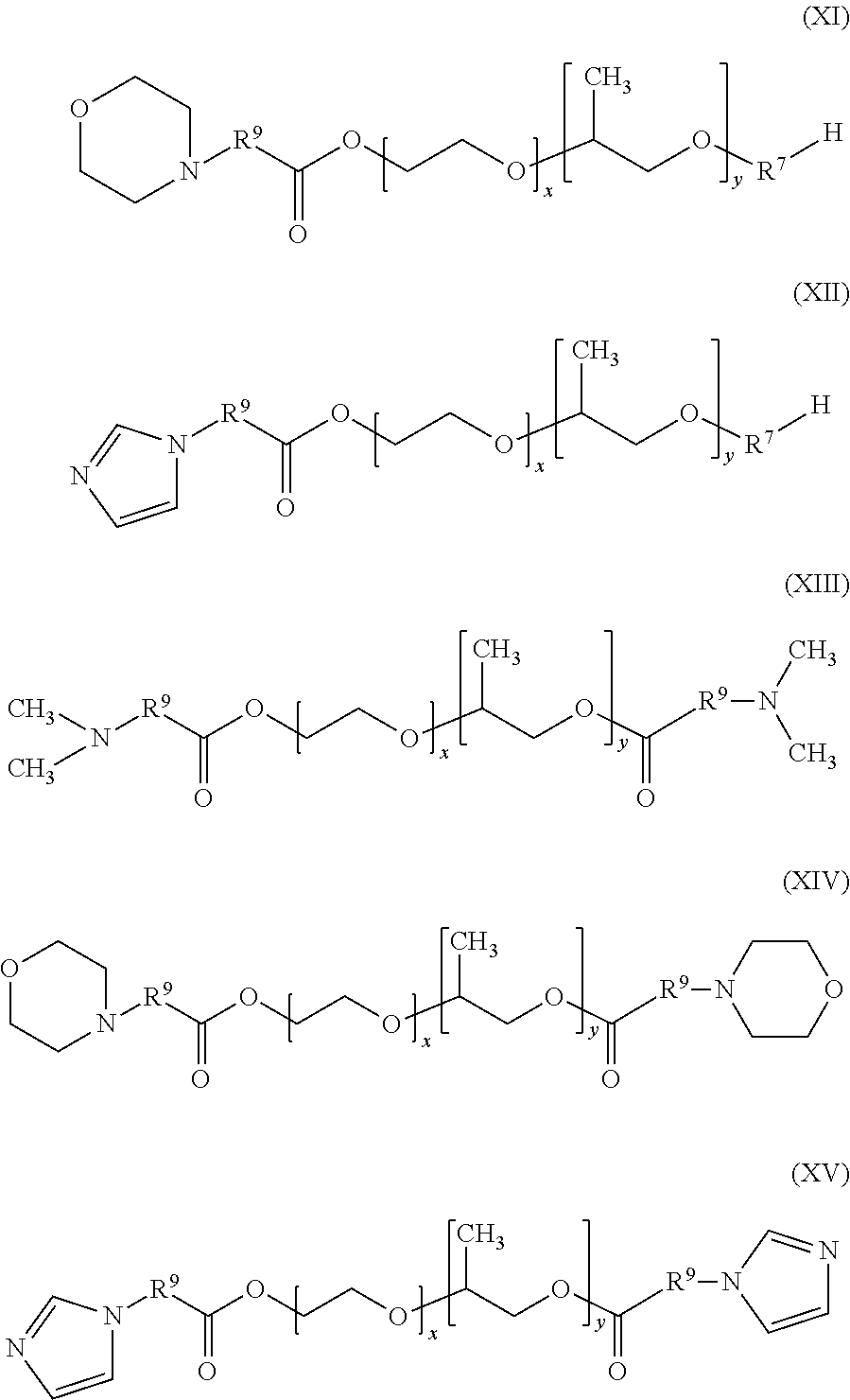Preparation of isocyanato silanes
a technology of isocyanato silane and isocyanato, which is applied in the direction of organic chemistry, chemistry apparatus and processes, and group 4/14 element organic compounds, etc., can solve the problems of difficult and expensive handling, lowering the overall yield of the target isocyanate, and distilled product made from the process disclosed
- Summary
- Abstract
- Description
- Claims
- Application Information
AI Technical Summary
Benefits of technology
Problems solved by technology
Method used
Image
Examples
example 1
[0096]A chloroacetic acid ester of the structure
[0097]
was prepared by placing into a reaction vessel dipropylene glycol monomethyl ether (331 grams, 2.24 mol) at room temperature under nitrogen. Over a span of one hour, chloroacetic acid chloride (279 grams, 2.46 mol) is added dropwise, with intense stirring. During the dropwise addition, the temperature increased and an hydrogen chloride formed. Upon completion of the dropwise addition, the batch is heated to 130° C. for 30 minutes. All constituents boiling at up to 130° C. / 20 hPa were then removed through a distillation. The result product was of a light yellow oil.
[0098]A 500-ml three-necked flask equipped with refluxing condenser, thermometer, dropping funnel and mechanical stirrer was charged with (111 grams, 1.33 mole as amine) of morpholine and (30 grams, 0.133 mole) of chloro acetic acid ester of the structure
[0099]
[0100]The temperature increased to 85° C. The mixture was cooled to room temperature then stirred at room tempe...
example 2
[0104]Tripropylene glycol (431 grams, 2.24 moles) are placed at room temperature under nitrogen. Over a span of one hour, chloroacetic acid chloride (558 grams, 4.93 moles) are added dropwise, with intense stirring. During the dropwise addition, the temperature rises to 82° C., and an intensive formation of HCl sets in. Upon completion of the dropwise addition, the batch is heated to 130° C. for 30 minutes. All constituents boiling at up to 130° C. / 20 hPa are then removed via distillation. The result is a light yellow oil.
[0105]A 250-ml three-necked flask, equipped with refluxing condenser, thermometer, dropping funnel and mechanical stirrer, was charged with morpholine (34.8 grams, 0.4 mole amine), 2-propanol (50 ml), and a chloro acetic acid ester prepared above with the structure
[0106]
(5.28 grams, 0.04 mole as Cl). The mixture was stirred at room temperature for 12 hours. Morpholine hydrochloride started to precipitate after approximately one hour. The salt was filtered off and t...
example 3
[0110]A 500-ml three-necked flask, equipped with refluxing condenser, thermometer, dropping funnel and mechanical stirrer, was charged with morpholine (264 grams, 3.2 mole amine) at room temperature. Chloroacetic acid ester of the structure
[0111]
(138 grams, 0.8 mole as Cl), that was prepared in accordance with the procedure of Example 2, was added during 40 minutes. The temperature increased to 95° C. and was maintained there for two hours. Morpholine hydrochloride started to precipitate after approximately 0.5 hours. The salt was filtered off and washed with a hydrocarbon fraction (boiling point range 60-100° C.). Target product and hydrocarbon fraction were unified and volatiles removed at 70° C. / 20 mbar. An oil phase was obtained which contained some visible salt traces. The oil phase was mixed with 50 ml of the hydrocarbon fraction, filtered and the volatiles were removed in vacuum. This process was repeated in total five times.
[0112]The obtained crude product was mixed with 100...
PUM
| Property | Measurement | Unit |
|---|---|---|
| molar ratio | aaaaa | aaaaa |
| temperature | aaaaa | aaaaa |
| temperature | aaaaa | aaaaa |
Abstract
Description
Claims
Application Information
 Login to View More
Login to View More - R&D
- Intellectual Property
- Life Sciences
- Materials
- Tech Scout
- Unparalleled Data Quality
- Higher Quality Content
- 60% Fewer Hallucinations
Browse by: Latest US Patents, China's latest patents, Technical Efficacy Thesaurus, Application Domain, Technology Topic, Popular Technical Reports.
© 2025 PatSnap. All rights reserved.Legal|Privacy policy|Modern Slavery Act Transparency Statement|Sitemap|About US| Contact US: help@patsnap.com



